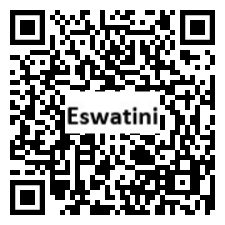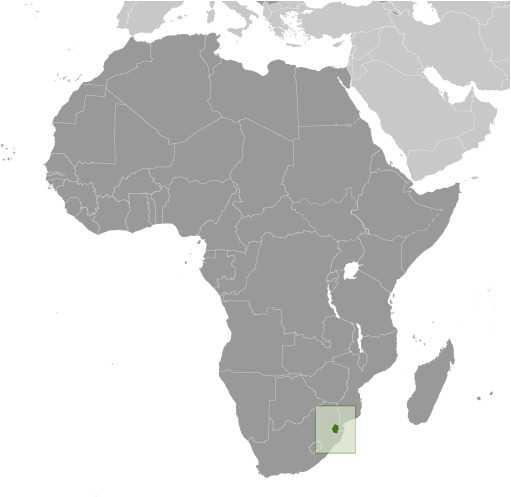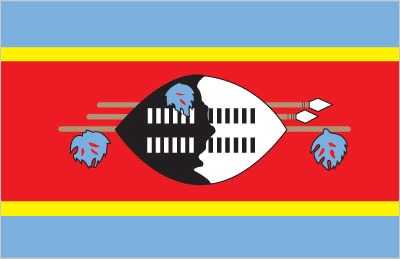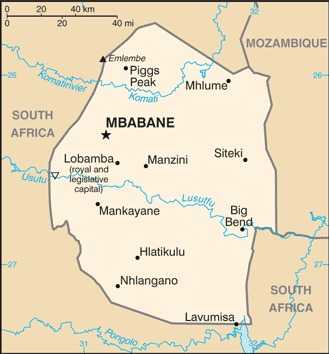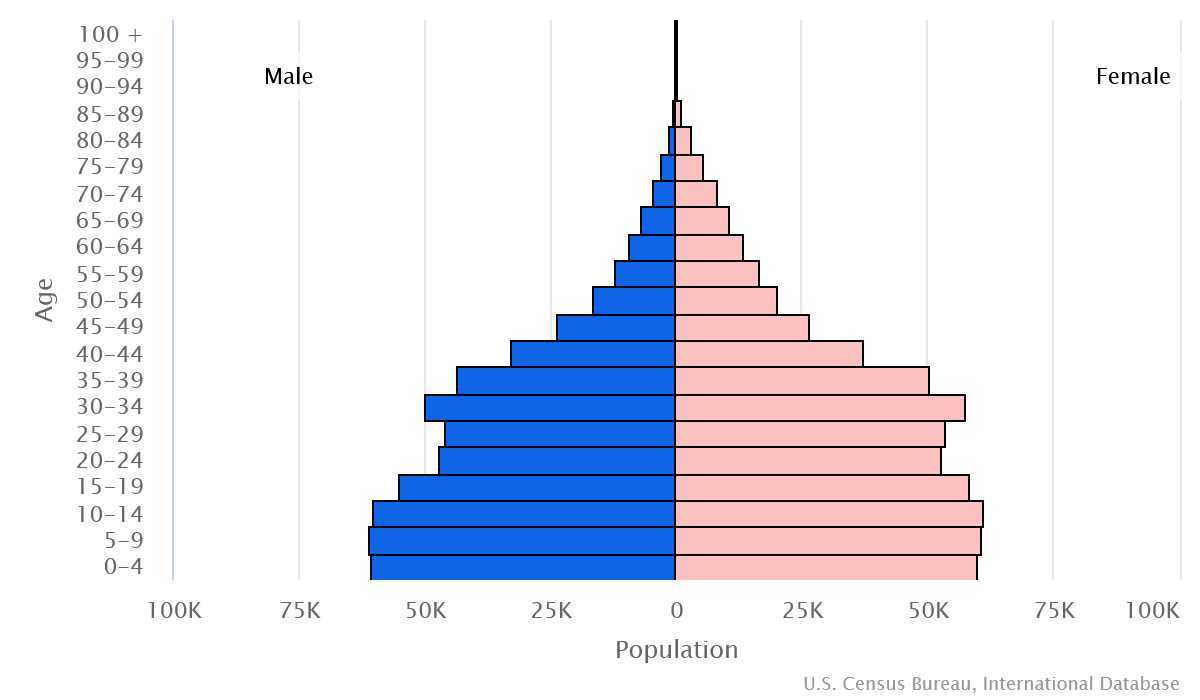Introduction
Background
A Swazi kingdom was founded in the mid-18th century and administered as a UK territory of Swaziland from 1903 until its independence in 1968. The country’s absolute monarchy adopted limited political reforms in a 2005 constitution. Swaziland changed its name to the Kingdom of Eswatini in 2018.
Geography
Area
total: 17,364 sq km
land: 17,204 sq km
water: 160 sq km
Climate
varies from tropical to near temperate
Natural resources
asbestos, coal, clay, cassiterite, hydropower, forests, small gold and diamond deposits, quarry stone, and talc
People and Society
Population
total: 1,138,089
male: 538,600
female: 599,489 (2024 est.)
Ethnic groups
predominantly Swazi; smaller populations of other African ethnic groups, including the Zulu, as well as people of European ancestry
Languages
English (official, used for government business), siSwati (official)
Religions
Christian 90% (Zionist - a blend of Christianity and traditional African religions - 40%, Roman Catholic 20%, other Christian 30% - includes Anglican, Methodist, Church of Jesus Christ, Jehovah's Witness), Muslim 2%, other 8% (includes Baha'i, Buddhist, Hindu, indigenous, Jewish) (2015 est.)
Population growth rate
0.7% (2024 est.)
Government
Government type
absolute monarchy
Capital
name: Mbabane (administrative capital); Lobamba (royal and legislative capital)
Executive branch
chief of state: King MSWATI III (since 25 April 1986)
head of government:
Prime Minister Russell Mmiso DLAMINI (since 3 November 2023)
Legislative branch
description: bicameral Parliament (Libandla) consists of:
House of Assembly (70 seats statutory, current 69; 59 members directly elected in single-seat constituencies or tinkhundla by absolute majority vote in 2 rounds if needed, 10 members appointed by the monarch, 4 women, one each representing each region, elected by the members if representation of elected women is less than 30%, and 1 ex-officio member - the attorney general; members serve 5-year terms)
Economy
Economic overview
landlocked southern African economy; South African trade dependent and currency pegging; CMA and SACU member state; COVID-19 economic slowdown; growing utilities inflation; persistent poverty and unemployment; HIV/AIDS labor force disruptions
Real GDP (purchasing power parity)
$10.885 billion (2022 est.)
$10.834 billion (2021 est.)
$9.788 billion (2020 est.)
Real GDP per capita
$9,100 (2022 est.)
$9,100 (2021 est.)
$8,300 (2020 est.)
Agricultural products
sugarcane, maize, root vegetables, grapefruits, oranges, milk, pineapples, bananas, beef, potatoes (2022)
Industries
soft drink concentrates, coal, forestry, sugar processing, textiles, and apparel
Exports
$2.095 billion (2022 est.)
$2.132 billion (2021 est.)
$1.808 billion (2020 est.)
Exports - partners
South Africa 66%, Kenya 5%, Nigeria 3%, Democratic Republic of the Congo 3%, Mozambique 3% (2022)
Exports - commodities
scented mixtures, raw sugar, garments, industrial acids/oils/alcohols, wood (2022)
Imports
$2.288 billion (2022 est.)
$2.173 billion (2021 est.)
$1.686 billion (2020 est.)
Imports - partners
South Africa 76%, China 4%, US 3%, Mozambique 3%, Mauritania 3% (2022)
Imports - commodities
refined petroleum, gold, plastic products, electricity, garments (2022)
Exchange rates
emalangeni per US dollar -
Exchange rates:
16.362 (2022 est.)
14.783 (2021 est.)
16.47 (2020 est.)
14.452 (2019 est.)
13.234 (2018 est.)
Page last updated: Wednesday, May 15, 2024
